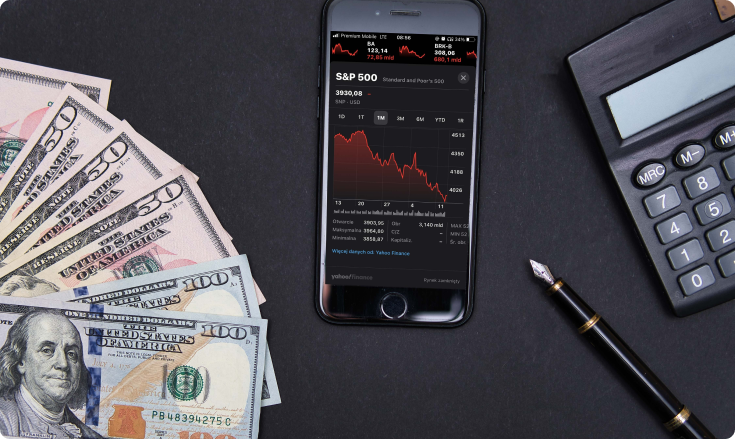Stop-Loss Order Explained

Before even opening a position, you, as a trader, should learn about a stop-loss order.
A stop-loss order is the most common and the most helpful order that a trader can set. This command helps you limit your losses to a predefined point and automatize the trading process. It is very easy to understand and apply.
What is a stop-loss order?
To better understand the concept, let’s explain first what is a stop order in general. An order to buy or sell an asset when its price moves past a particular, predefined point and limits the investor’s loss or locks in a profit is called a stop order. In other words, a stop order is an order that is set to buy or sell an asset once the price reaches a specified level. This level is set earlier by an investor (trader). Because this level signifies a specific price after which the position gets closed, it is called “a stop price”. Once the market reaches “a stop price” level, the order is executed and becomes a market order.
Now, when we have a stop order to sell an asset when it drops to a predefined price level (a stop price), we call that order a stop-loss order.
When investors set a stop-loss order, they actually make a request to their brokerage houses to sell an asset of interest at a desired pre-set price that stops any further losses.
When to use a stop-loss order?
Investors use this order in a bearish environment. This means that investors set a stop price when they believe that prices might go down. In that case, they set a stop-loss order to limit their potential losses on a certain level.

If you are leaving for holidays, entering any situations where you can’t monitor your trades or trading in a highly volatile market that could change the direction overnight, every mindful brokerage or investor will advise you to set stop-loss order. In the situations described above, a stop-loss is a must. However, we recommend you to place a stop-loss order every time you feel that it would reduce your trading risks.
Advantages & disadvantages of a stop-loss order
When we talk about the advantages and disadvantages of a stop-loss order, we can say that the benefits are greater than the disadvantages. Check them out below.

Advantages:
- Your funds are safe. A stop-loss order protects your funds and reduces the stress every trader has to deal with.
- You don't have to continually monitor the markets. Once you place a stop-loss order, you don’t have to be in front of the screen all the time and keep track of every trade and change in the market.
- Protects your trading from emotional influence. When letting software execute an order, you are automating the process. Investors tend to believe that an asset will recover, come around, but many times that is not the case. Therefore, it’s better to make that decision earlier when you’re not so emotionally involved.
- It costs nothing to implement it. There’s no additional commission for placing a stop-loss order. The commission is only paid when a stop-loss order becomes a market order.
- It requires only basic trading knowledge. It’s not a complicated move.
Disadvantages:
- The price difference. Once your stop-loss order is triggered it becomes a market order, which means that there might be a price mismatch - the price at which you sell can be different from the stop price.
- Short-term fluctuations can activate a stop price. If you weren’t cautious enough or you didn’t follow the movements of an asset, it can happen that your stop order activates at the point where some fluctuation is expected. For example, if an asset has a 10% fluctuation and you set a stop price at 5% below the current price level, you could lose out on potential profit.
- There are no rigid rules about the level at which you should place the stop order. You can never be 100% sure that you chose the right level because there are no strict rules that determine where it should be set.
Example
Let’s assume you want to trade with stocks. You bought stocks of the Facebook company at the price of 100 USD and you are waiting for the price to rise, so you can sell them and make a profit. But, because you are cautious and you want to protect yourself from big losses, you want to place a stop-loss order at the $95 level, just in case the market goes bearish. This way, if the price drops and reaches a level of $95, your stock will be sold - a stop-loss order will activate and will become a market order. In case the market never reaches this price level, the stop-loss order will never become a market order.
Conclusion
A stop-loss order is an order that traders set when they want to stop potential further losses by selling an asset at a predetermined price level, called a stop price. Once the market comes to that level, a stop-loss order becomes a market order.
When investors buy assets, it means that they assume prices will rise. If they predicted it well and prices went up, they will be able to sell assets at a higher price and earn some money. But, if prices fall and investors sell assets, they will lose money. Because the market is unpredictable and we can’t know how bearish it can go, it is recommended to set a stop-loss order whenever you buy a product.
Your emotions will be irrelevant to trading and you wouldn’t have to monitor the market at all times. Furthermore, to set a stop-loss you don’t need more skills than an average trader has and it doesn’t involve additional costs.
Sources Consulted:
LimitPrime © 2025
Begin to invest and
start earning today!
Categories
Do you need personalized assistance?
READ MORE INTERESTING ARTICLES

Diversificationnoun the action of diversifying something or the fact of becoming more diverse. a trading strategy that reduces risk. D...
Read More
As any risk disclosure will tell you, trading financial instruments put the trader at risk of losing some or all of their allocated cap...
Read More
What are indices?Indices measure the performance of a group of stocks, bonds or other investments. These investments are often grouped...
Read More